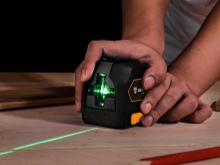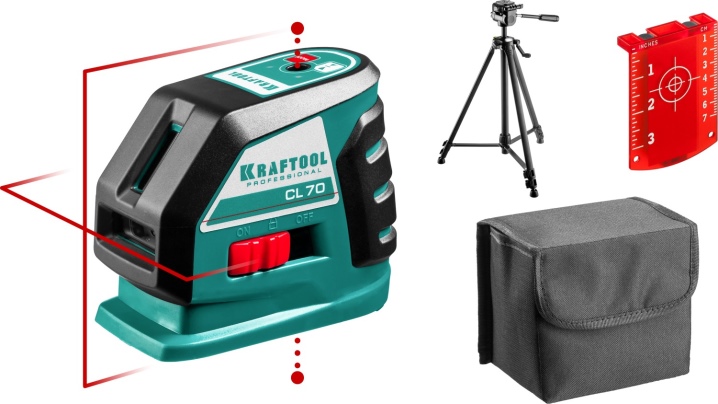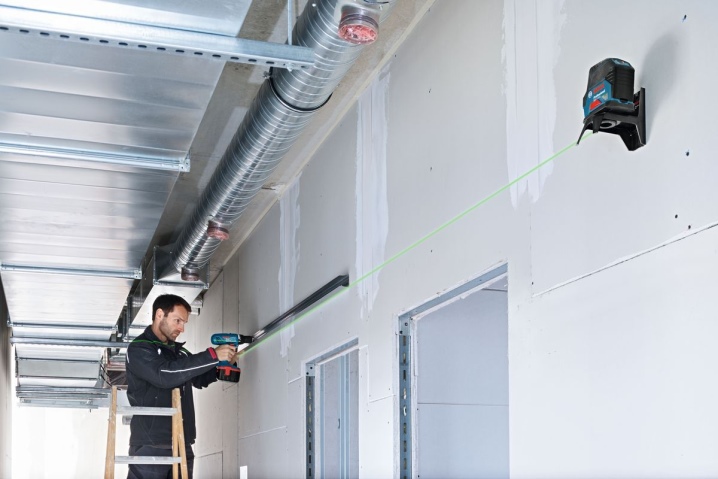How to use a laser level correctly?

The times when only professional builders and repairmen could provide high accuracy during repair work are long gone. Currently, this can be done independently using a unique tool - a level that can replace a ruler, pencil and level. However, there are some nuances that must be taken into account in order to use the tool correctly and productively.



Fundamental rules
In this article, a level instrument refers to a laser level. Using the level correctly is quite simple - you just need to follow a few simple guidelines.
First of all, it is necessary to provide the device with electricity. This can usually be done with batteries, less often with a rechargeable battery. Typically, the batteries last for 8-10 hours of continuous use.



Another important point is the advance purchase of protective glasses, because laser beams negatively affect a person's eyes. In some model variants, they may be included with the device itself.
It is also necessary to get rid of dust on the device from time to time. To avoid damage, it is recommended to carry the instrument only in the special bags that usually come with it.
Some models (mostly expensive and the latest generation) are equipped with a self-leveling function, also called alignment.
An important point when using the device is to fix it on a tripod., which is attached to the device using a special screw connection. If it turns out that the threaded connections do not match, then you need to purchase a so-called adapter.

Bringing to working position
The process of bringing the instrument into working condition is one of the most important when using the level - the accuracy of the measurements depends on it. Below are some important recommendations to help you set up your level.
- There should be no obstacles between the surface on which the laser beam is projected and the level itself, otherwise the rays will be reflected from various surfaces, which will lead to incorrect results during operation.
- It is also necessary to choose the optimal value of the distance, which can be seen in the instructions attached to the instrument. It is obvious that the proximity of the device to the surface directly depends on the error: the closer the device is, the smaller the error will be. However, in each case, the distance is selected individually. It is also worth noting this point: the more expensive the model of the device, the, as a rule, it has a lower level of error.
- It is best to use a tripod when setting up the level. If not, then the level should be located only on a flat surface. The device can also be installed on a wall or ceiling.
- It must be borne in mind that the device must be well fixed. During work, it must not be moved anywhere.
- The device must be aligned with the horizon before use. To do this, you can use a function such as "automatic alignment". In this case, the device will signal the presence of distortions. It is worth remembering that the instrument only recognizes inaccuracies in the setting less than 15 degrees. With a greater degree of distortion, you must correct the position of the level yourself.


Some models are also equipped with a bubble level. If a person installs the device on unpaved ground, then it is imperative not only to fix it, but also to dig the legs into the ground.
By the way, it is when working in the air that it is necessary to carefully monitor the alignment of the device, since later this can greatly affect the process of beating off the plane or leveling various walls.
It is not recommended to work with the level in the presence of children or pets.
Of course, the most important of all of the above is to set up the instrument firmly and level with a tripod.

Setting up the laser level
If the device has already been installed according to the instructions, then you should not start working immediately - you need to wait a little. Before starting work, check the level for accuracy. For the first stage of verification (accuracy of laser tilt of the plane), you need to place the device at a distance of 5 m from the wall.
Now you need to mark with a pencil on the surface where the ray touches on the wall. Turning the level each time 90 degrees, you must also mark the top and bottom points.



If the distance between them is less than 6 mm, then the device is configured correctly.
The second step is to check the accuracy of the vertical angle. It is necessary to fix a plumb line with a cord 2.5 m long on the same surface.After that, you need to direct the level beam at it. If the deflection of the laser beam is less than 3 mm, then the device can be considered correctly set up.
Each such device usually has its own list of functions. The main one of the latter is the installation of two streams: horizontal and vertical. Sometimes they can be turned on at the same time.

Other features include 90-degree angle, X-slope, Y-slope, line-off mode, and other modes.
Technique of work
Usually, even a beginner will not be difficult to master the technique of working with such a device. Despite the fact that the detailed technique of work can be read only in the instructions attached to the tool, it is worth going through the main points.
The technique of work can be divided into two main stages.
- It is necessary to decide with which plane (function) you have to work. After turning on the device and setting the interface to the appropriate option, you need to go to the next step.
- It is necessary to align or check the already adjusted device. Then you can get to work.

Auxiliary options
Standard models are not always equipped with additional options. But they are equipped with professional tools. Ancillary options are a range of options, which will be discussed below.
- A laser that can rotate 360 degrees.
- Optical sight. This function of the level allows tracing the laser range for almost 100 m.
- Rail. Helps to draw several parallel lines at the same distance.
- Laser beam receiver. Increases the range of the beam. It is sometimes replaced by a reflective plate, which has the same effect.
By the way, in the course of work, the level is used not only by teams of builders and repairmen, but also by specialists laying various communications.

In conclusion, I would like to note the fact that most models of such a device can be expensive. However, according to consumer reviews, the price pays off with a high-quality and quick repair, as well as saved time.
See below for how to use the laser.













The comment was sent successfully.